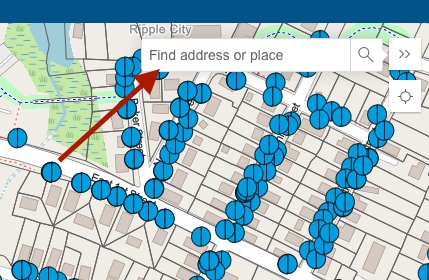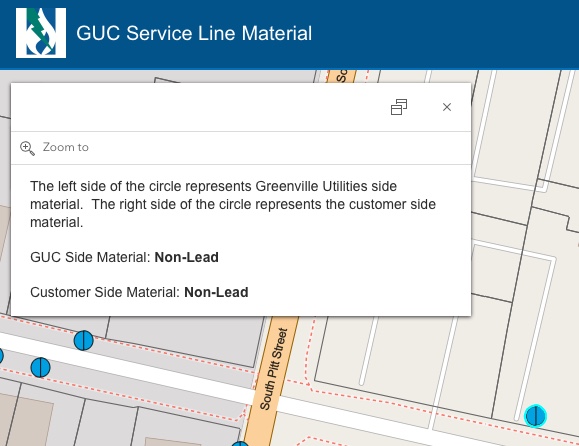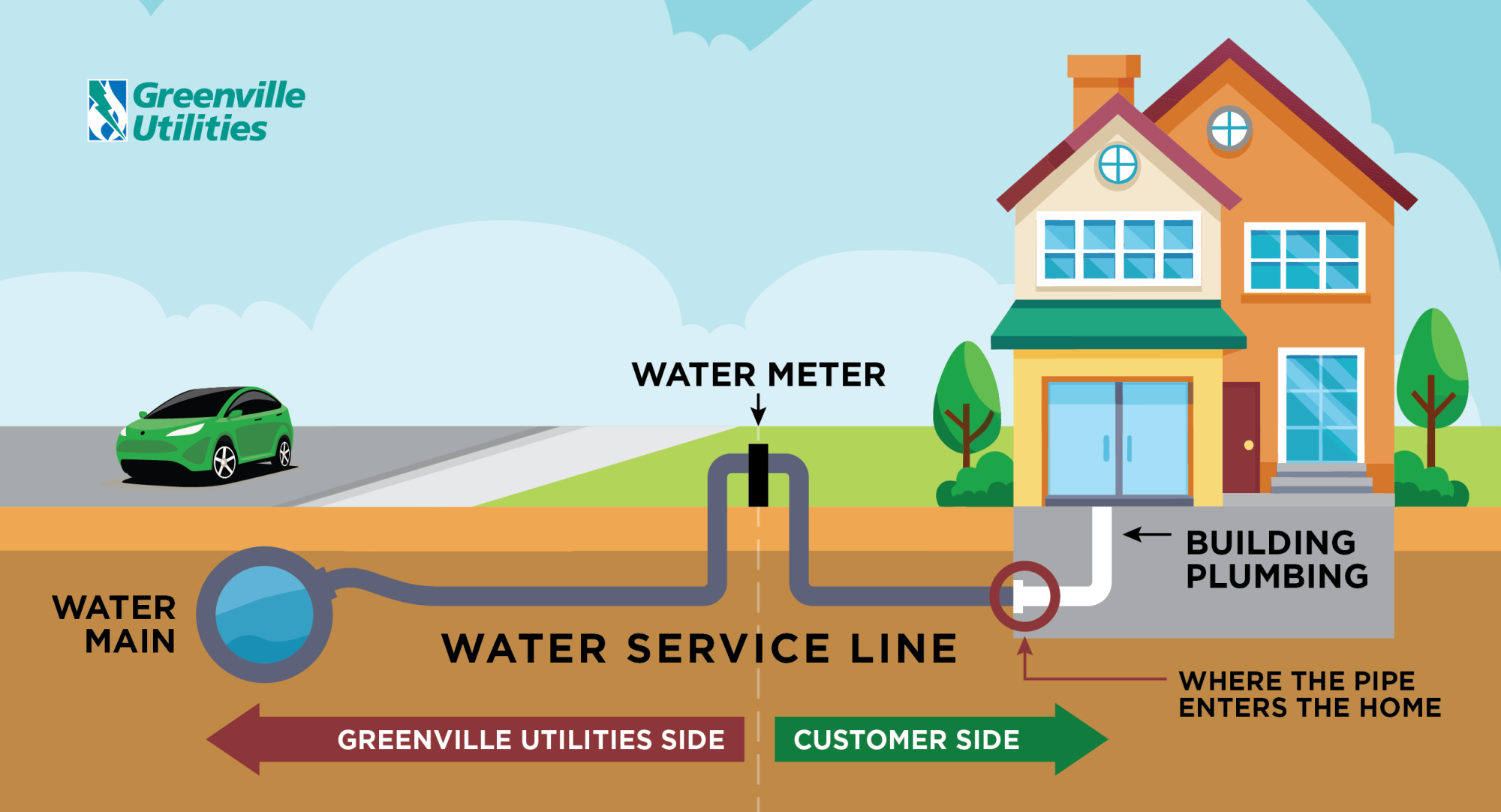GUC’s Drinking Water Service Line Inventory
At Greenville Utilities, one of our top goals is to provide you with a safe and dependable supply of drinking water - from our treatment plant all the way to your tap. Our water distribution lines are no exception. For more than 30 years, GUC’s policy concerning lead in water lines has been to replace lead service lines as our crews find them, even abandoned lines no longer in use. As you’ll see on our interactive water line inventory map below, this policy has served our customers well!
Background on Water Line Inventory Requirements
The U.S. Environmental Protection Agency’s (EPA’s) drinking water regulations concerning the Agency’s Lead and Copper Rule are changing. One of the changes is that every water system in the nation is required to inventory the material makeup of pipes on their water distribution lines.
In addition to GUC distribution lines, the new rules require the identification of lead materials that may exist on the customer’s water service line that connects the GUC meter to the customer’s home or business.
While GUC is responsible for providing high quality drinking water distributed throughout our system, we cannot control the variety of materials used on private property, nor do we have any existing records to verify if lead may exist on private property. Copper piping with lead solder as well as lead service lines are more likely to be found in homes built before 1986. Among homes without lead service lines, brass or chrome-plated brass faucets may also create lead exposure. (See “What to Know about Lead in Drinking Water” and “Basic Lead Information” below for more details.)
Inventory of Pipe Materials
Beginning in February 2023, our water distribution crews inspected all of the water service lines on our system made of an unknown material type as part of the EPA’s Lead and Copper Rule Revisions (LCRR). The goal was to identify and replace any water lines made of lead.
Crews worked with GUC’s Geographic Information Systems (GIS) staff and used the Survey 123 app. They conducted site surveys to examine both sides of the meter for homes built before 1986. We are happy to report that the survey of both GUC and customer water lines revealed zero lead service lines on either side.
Interactive Map
To view the map and water service lines in your area, use the link below.
Map Instructions:
Enter your address in the top right-hand corner of the map and click on the result that matches your address.

Once your address has been located, click on the dot that represents your service point.

A text box will appear with information about your service line lead status. The left side of the circle represents the Greenville Utilities side of the distribution line, and the right side of the circle represents the customer side (service line).

Map Disclaimer: The information provided by GUC shall be used for the purpose of providing property owners and residents information regarding their water services. The data is not for commercial, legal, or other use.
GUC cannot guarantee the accuracy of these maps and is not liable for damages of any kind, including but not limited to lost business, lost profits, business interruption, data loss, or other loss that might arise from using this mapping resource and information. GUC reserves the right to update or terminate the display of these maps and records at any time.
What to Know About Lead in Drinking Water
Since the early 1990s, public water providers like GUC have been treating and testing drinking water to protect the public from lead and copper exposure in drinking water. In 2021, the Lead and Copper Rule was revised by the U.S. Environmental Protection Agency (EPA) to further ensure that our drinking water remains lead safe.
Protecting public health will always be GUC’s number one mission. The water leaving GUC’s water treatment plant does not contain lead. This is confirmed with regularly scheduled testing. However, it is possible for lead to enter drinking water from corrosion of lead service lines and plumbing materials. Our current corrosion control program - that includes the addition of orthophosphate - is effective in preventing lead in pipes and plumbing materials from getting into drinking water. Our regular testing of drinking water in residents’ homes confirms this.
In 2021, the EPA revised the Lead and Copper Rule to provide an improved level of public health protection when it is slated to go into effect in October 2024. The changes focus on identifying and removing lead service lines and providing information about lead in drinking water to the community.
Basic Lead Information
Lead is a common, natural metal that is found throughout the environment; however, it rarely occurs naturally in surface water supplies such as lakes and rivers. Lead enters drinking water primarily as a result of corrosion of materials containing lead used in household plumbing. This is particularly the case with older homes. Piping containing lead is likely to be found only in homes built before 1930. Copper piping took the place of lead piping, but lead-based solder was still used until 1985 when it was banned by North Carolina. Brass materials containing less than 0.25% lead are now used in almost 100% of all residential, commercial, and municipal water distribution systems. This action has significantly reduced the incidence of lead in drinking water.
Since 1991, GUC has participated in the lead and copper sampling program as required by the Safe Drinking Water Act (SDWA). As a result, GUC implemented a corrosion control program to stop lead in pipes and fixtures from entering the water system. This corrosion control program has been successful in that GUC’s samples are well below the EPA-mandated thresholds for lead in drinking water.
Lead may dissolve into tap water when it stands for periods of several hours in the plumbing of some older homes. These are homes that have copper pipes with lead solder, lead pipes, or lead service lines.
Here's an example of how service lines come from the water main into the house.

Having Your Tap Water Tested
If you are a GUC water customer, your home was built before 1986, and you are concerned there may be lead in your home's plumbing, you can request to have your water tested for lead. To request a free sample kit, contact the Water Treatment Plant Laboratory Manager at 252-551-1563.
For more information on lead in drinking water, visit the EPA’s Ground Water and Drinking Water website.
